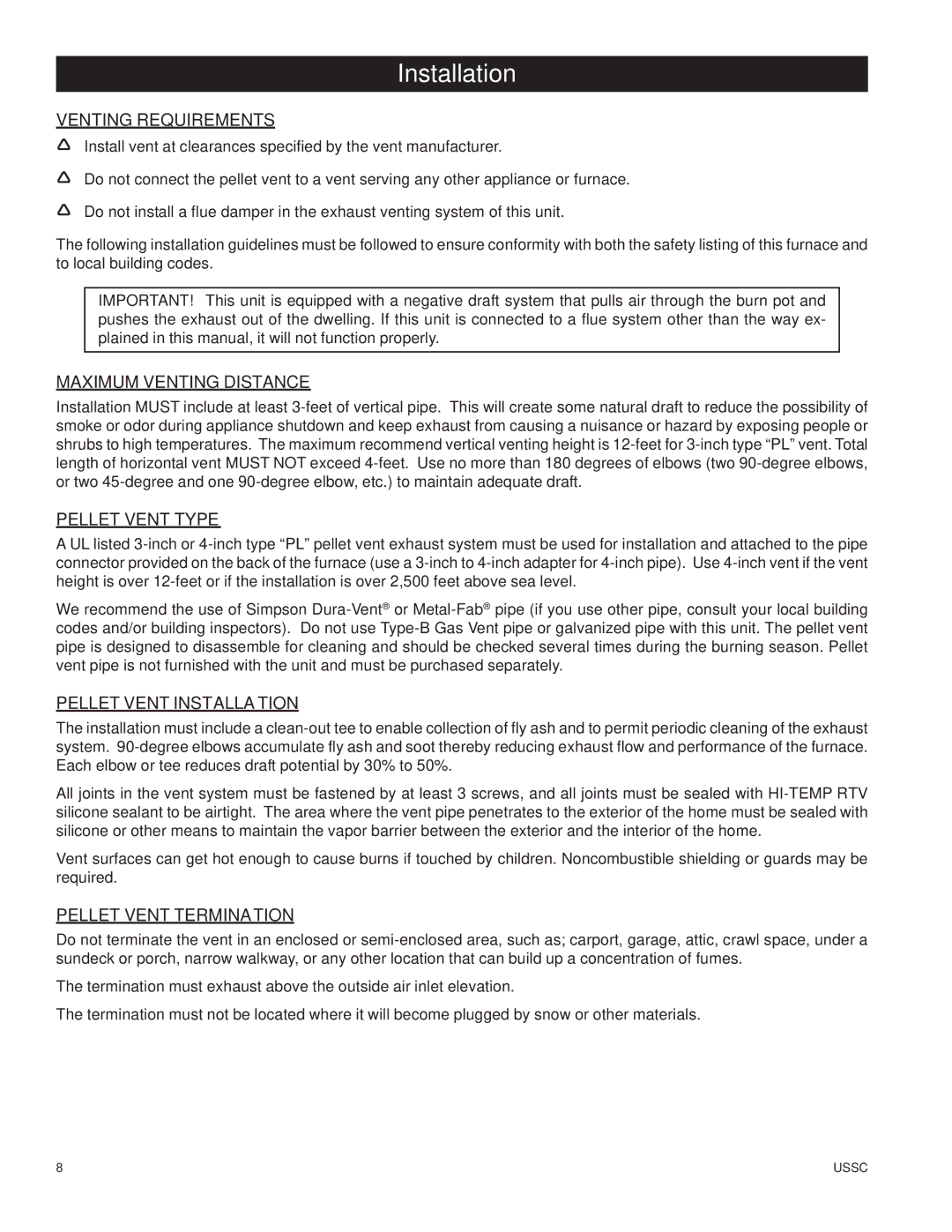6100 specifications
The United States Stove 6100 is a highly efficient and versatile wood-burning stove designed for both performance and aesthetics. Ideal for homeowners looking to add a touch of rustic charm while ensuring optimal heating capabilities, this model stands out in the crowded market of heating appliances.One of the main features of the US Stove 6100 is its impressive heating capacity. It can heat areas up to 2,000 square feet, making it suitable for both large living spaces and smaller cabins. This stove has a firebox that can accommodate logs up to 20 inches long, allowing for longer burn times and reduced frequency of reloading. Its large windowed door provides an attractive view of the fire, enhancing the ambiance of any room.
The 6100 incorporates advanced combustion technology, which ensures higher efficiency and lower emissions. The stove is designed with secondary combustion features that maximize heat output while minimizing smoke and particulate emissions. This is particularly important in today's environmentally conscious market, where consumers are seeking cleaner options for heating their homes. The 6100’s efficiency can help reduce heating costs and lessen the environmental impact of wood heating.
Another highlight of the US Stove 6100 is its durable construction. Built from high-quality materials, the stove is designed to withstand high temperatures and the rigors of daily use. The cast iron body not only enhances its longevity but also provides excellent heat retention, further improving efficiency. The internal components are also designed to facilitate easy maintenance, with features that make cleaning the stove a hassle-free experience.
The stove is equipped with a straightforward air control system that allows users to adjust the burn rate easily. This feature enables individuals to maintain the desired temperature and burn efficiency, ensuring that the stove operates according to specific heating needs. Additionally, its mobile home approved design makes it versatile enough for various living situations, from traditional homes to mobile units.
In summary, the United States Stove 6100 combines functionality, efficiency, and style, making it a worthy investment for those looking to enhance their heating solution. With its substantial heating capacity, advanced combustion technology, and durable construction, the 6100 promises to deliver both comfort and aesthetic appeal, positioning it as a top choice among wood-burning stoves.

